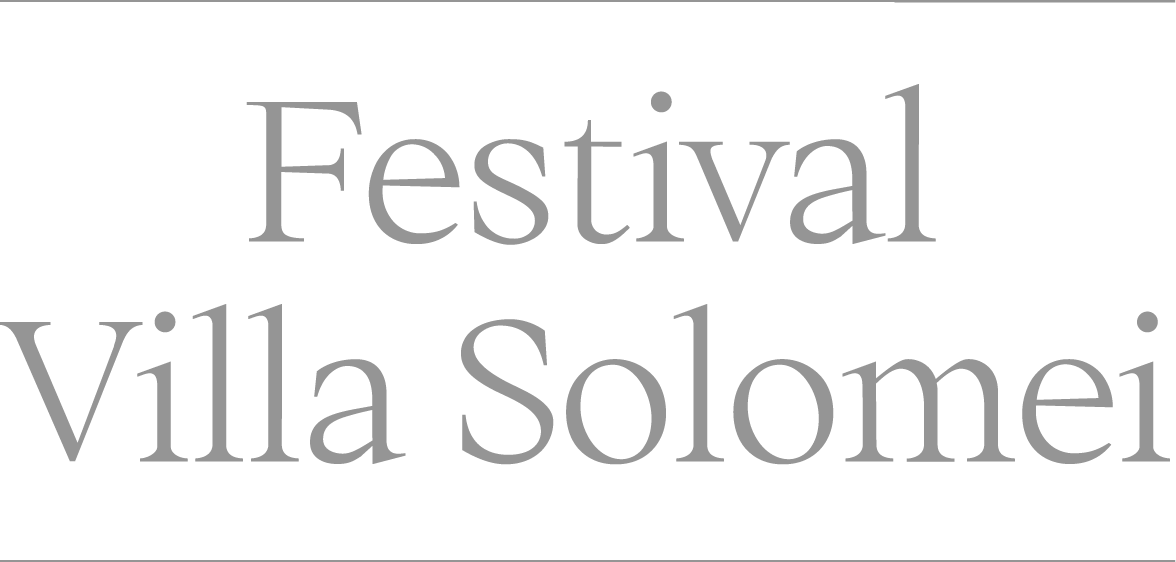The Places of the Festival

Cucinelli Theatre
The architecture of the Cucinelli Theatre, of evident Renaissance inspiration, recalls the style of the Parma and Sabbioneta theatres and inside incorporates an evocative and welcoming space.
The classic style emerges decisively both in the external aspect and in the scenic layout. The theatre is accessed via a curvilinear pronaos of Ionic order that leads to a compact colonnade; then a short passage under the gallery leads to the stalls surrounded by steps.
The theatre can accommodate 200 seats, the stage is 12 meters wide, 8 meters deep with a 7 meter proscenium. The acoustics are optimized through the differentiation of the soundproofing materials while a system of hatches, which covers almost the entire surface of the theatre and the stage machinery ensures maximum structural versatility and solutions for the various scenic requirements.

In the shadow of the bell-tower
The bell-tower was commissioned by Matilde Bucarini to be built beside the Church to replace the old tower. The last wishes of her husband, Raffaele Bucarini, who had funded the entire reconstruction of the church complex, were that it be built to a design by the architect Nazzareno Biscarini.
The works began in 1912, and on 26 July 1914 the completed structure was inaugurated with great celebrations that included a fireworks display, a concert given by the Schola Cantorum Laurentiana from Perugia, and “electric lighting and film screening”.
In 1923 a mechanical clock was added to the bell-tower which still sounds the hours and quarter-hours as residents and visitors go about their daily lives.
Behind the bell-tower, in the shade of a large linden tree, the first of the musical “interludes” will mark the end of one concert and the start of the next during the Villa Solomei Festival, filling the village streets with music.

Church of San Bartolomeo
Located outside Solomeo’s castle, this church was rebuilt in 1748 on the site of a fourteenth-century structure. With the support of the local community, in 1882 the parish priest took on the task of expanding, or rather rebuilding the church, which was too small and cramped for the population.
The new building was designed by the architect Nazzareno Biscarini, and the interior decoration was entrusted to the painter Coriolano Mazzerioli, who frescoed its walls with the Patron Saints of Solomeo, the Four Evangelists, the Stories of Christ, and the Popes from Peter to Leo XIII. The decoration was completed in 1895 (the date painted on the open book held by St Matthew in the pendentive of the dome). Inaugurated on 26 July 1914, it holds the Gonfaloncino (banner) depicting the Virgin and Child between Ss Monica and Bartholomew, a splendid example of Perugia-area Mannerism during the Counter-Reformation, and an eighteenth-century wooden Crucifixion.
During the Villa Solomei Festival, it will host concerts performed on the splendid organ built by the organ-maker Adamo Rossi of Perugia in 1791.

The Olive Grove
Once the kitchen garden for the parsonage, the olive grove is now a delightful garden to the left of the church, next to the entrance to the parsonage.
Here, the housekeeper grew fruit and vegetables for the priest and his family. Hens would scratch about in the shade of a vine-covered pergola bearing fragolino grapes, which children would steal from the wall above, where they would play at keeping their balance.
Now transformed into a garden open to all, it is arranged on two levels adorned with cypresses, olive trees, and a small wooden structure offering tables in the shade. Access to the garden is via the village’s main square by means of a stone double staircase.
From here one can admire the setting sun as it “retires” behind Mount Penna.
During the Villa Solomei Festival, the garden will host the second musical “interlude”, to be enjoyed with an aperitif which will be offered to everyone in the audience.

Piazza del Castello
When the dwellers of Solomeo decided to fortify their settlement for defensive purposes in the spring of 1391, the building that had been Villa Solomei would soon become Castrum Solomei. The fort was built at the back of the palace belonging to the castle’s wealthy owner and builder of castle, ‘Iohannis Cole Galassi’ Meo. Eighteenth-century land register maps show a castle built to a quadrangular plan with two entrances, one on the eastern side and one to the south. Two pointed arches can still be seen, providing clear evidence of the castle. Today, the inner courtyard of the medieval fort is a charming little square. The windows overlooking the square belong to what were once farmers’ homes, and have now been transformed into tailoring classrooms and the company boutique.
During the Villa Solomei Festival, the penultimate of the day’s events will be held in Piazza del Castello, offering a varied programme of music, dances, and readings.
Concert organised by the Brunello and Federica Cucinelli Foundation as part of the Comitato AMUR’s Music with a View Festival with Le Dimore del Quartetto and Associazione Dimore Storiche Italiane.
In cooperation with Touring Club Italiano, Fondo Ambiente Italiano, and Teatro Stabile dell’Umbria

Amphitheatre
The oval area called the Amphitheatre opens out from the Forum of the Arts, directly facing the Cucinelli Theatre. Inspired by the gardens that embellished the villas of ancient Rome, the theatre features a semi-circle of large steps on its shorter side that serves as a backdrop for performances. Surrounded by stretches of green hillsides, the space can hold up to 500 people, and during the summer season it hosts the concerts of the Villa Solomei Festival and the Settima Arte film festival. Here, artists of international renown perform for an audience that flocks to see them from all over the country each year.
The surrounding buildings all represent the cultural identity of Solomeo, as they are designed to be gathering places for sharing knowledge and beauty.
During the Villa Solomei Festival the “grand concert” concluding each day will be held here.

The Philosophers’ Garden
Set within the Forum of the Arts, the Philosophers’ Garden is an intimate space conducive to reflection. Characterised by its terraces descending towards the hills, it is a natural, poetic spot where one can pause to reflect and admire the surrounding landscape.
The Italian-style hanging garden is a sort of rampart with rose espaliers, grapevine-covered pergolas, and fountains looking out over the gentle Umbrian landscape.
During the Villa Solomei Festival, a concert “with a view” will be held here, combining the pleasure of listening with wonderful scenery.

The Tribute to Human Dignity
The monument is an exedra of Greco-Roman inspiration created following the principles expounded by Vitruvius, Palladio and Sebastiano Serlio, with a design that respects the rules and proportions of classical architecture even in the smallest details.
The work, built with whole blocks of travertine, placed one on top of the other, evokes a sense of strength and solemnity.
